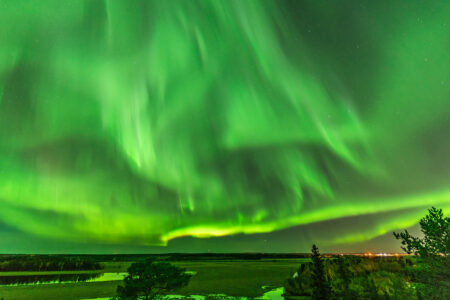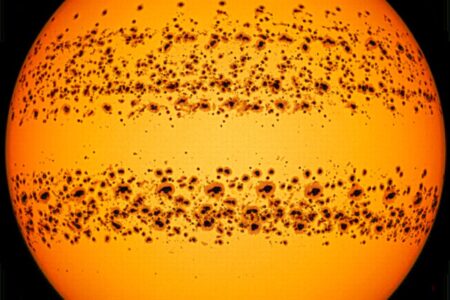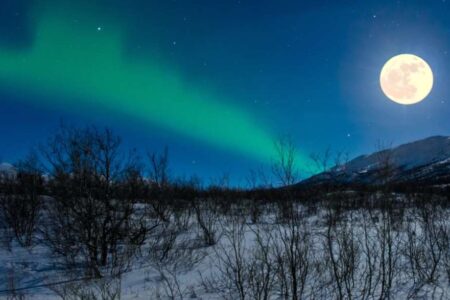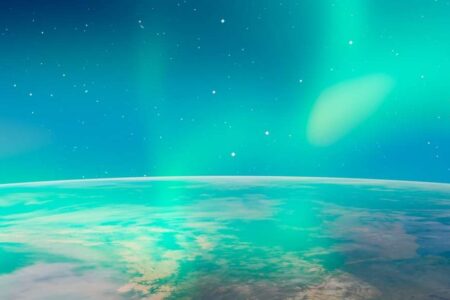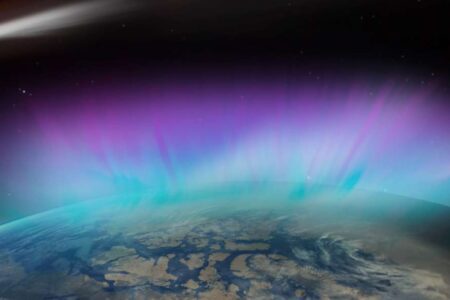Wondering when to see the northern lights? Well, if you don’t have your heart set on a winter break, planning a northern lights tour to coincide with the spring or autumn equinox is a great idea.
Twice a year, the Earth’s position in relation to the sun creates the ideal conditions for frequent and vibrant aurora displays. But why does this happen?
Here, we explain what the equinox is, why it enhances aurora activity and what you can expect from a northern lights holiday during the solar equinox seasons.
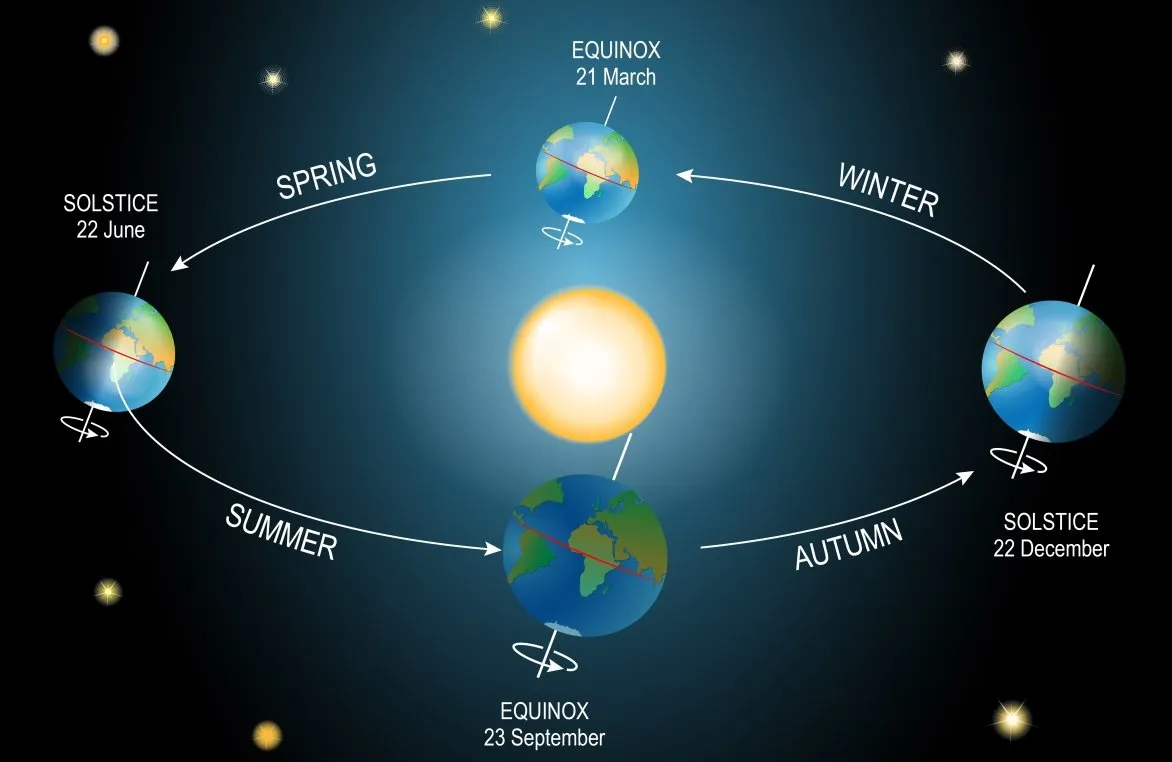
What is the equinox?
The equinox — which means “equal night” in Latin — is the time when the sun crosses the celestial equator and day and night are the same length. We get 12 hours of daylight and 12 hours of darkness.
This astronomical event occurs twice a year, once in spring and once in autumn. And it’s great news for aurora hunters. During the weeks around an equinox, auroral activity tends to be particularly strong.
When is the spring equinox?
The spring equinox (also known as the vernal equinox and the March equinox) falls between the 19th and 21st of March each year. This date marks the end of astronomical winter and the start of astronomical spring in the northern hemisphere.
When is the autumn equinox?
The autumn equinox (also known as the fall equinox, the autumnal equinox and the September equinox) occurs between the 21st and 24th of September each year. This date marks the end of astronomical summer and the start of astronomical autumn in the northern hemisphere.
How do the solar equinoxes impact the aurora borealis?
Travelling to the Arctic during the spring or autumn equinox increases your chances of seeing a spectacular northern lights display.
The northern lights are created when solar particles from the sun collide with Earth’s atmosphere. The more particles that reach our planet, the more impressive the aurora.
The equinox is a time of high geomagnetic disturbance — there are up to twice as many geomagnetic storms on the surface of the sun. This throws more solar particles out into space.
Also, at times of equinox — according to the widely accepted Russell-McPherron hypothesis — the Earth’s tilt in relation to the sun allows more solar particles to enter our atmosphere.
This results in intense auroral activity, which means brighter and more colourful northern lights displays.
Autumn vs spring equinox: which is best for seeing the northern lights
Travel to the Arctic during the spring or autumn equinox and you have an excellent chance of seeing the aurora borealis.
Auroral activity is at a peak, skies tend to be clear from clouds and you get around 12 hours of darkness per night — near-perfect northern lights viewing conditions.
So which is the best season to see the northern lights? It really comes down to what you want to see and do on your aurora borealis trip.
Seeing the aurora around the autumn equinox
On a northern lights holiday in autumn, the Arctic landscape is a blaze of oranges, reds and yellows. Temperatures are mild and snow is yet to fall. So you can enjoy activities like hiking, kayaking and foraging. This is also a great time for a road trip around Iceland as you can count on clear roads and easy driving.
Seeing the aurora around the spring equinox
During March, temperatures are beginning to rise — but the Arctic is still a winter wonderland. It’s cold and snowy, with the thaw only arriving in Iceland in late March and in northern Norway and Lapland in mid-April. Travelling at this time, you can enjoy late-season winter activities, like husky-sledding and snowmobiling. You also get to see breath-taking Arctic landscapes blanketed in snow.
Other factors that affect your chances of seeing the aurora
Visiting Norway, Sweden, Finland, or Iceland during the solar equinoxes gives you an excellent chance of seeing an intense aurora display. But it’s not the only factor you need to consider. Here are some other things that impact your chances of seeing the northern lights.
Hours of darkness
The longer the night, the greater the aurora-watching window. While winter offers nearly non-stop darkness, the best northern lights displays usually occur around midnight, meaning you still have a good chance of seeing the aurora in spring and autumn. You just have to stay up a little later for your aurora-chasing adventures.
Solar activity and the solar cycle
The northern lights are caused by solar activity, which varies from night to night and year to year. Looking at the solar forecast gives you an idea of how intense solar activity is likely to be on any given night. You can also aim to travel around the solar maximum, a period of intense solar activity that occurs once every 11 years as part of the solar cycle.
Location
The best places to see the northern lights are in or near the Arctic Circle. This includes all of Iceland, northern Norway, and the northern regions of Sweden and Finland known as Lapland. Here, the aurora shines with the greatest frequency and intensity.
Artificial light
The bright lights of towns and cities make it harder to see the aurora. Once you’re in the Arctic, you need to travel to remote areas with very little artificial light. Against these dark skies, the northern lights are more likely to be visible.
Weather conditions
Cloud cover obscures the aurora from view. So seek out clear skies or stay in areas known for their cloud-free microclimate — Abisko, the Luleå archipelago and Iceland’s glaciers are renowned for their clear nights and excellent aurora viewing conditions.
Maximise your chances of seeing the aurora on an Aurora Nights northern lights holiday
The Aurora Nights team are northern lights travel experts. We can advise you on the best times and places to see the aurora borealis so you have the best possible chance of seeing a spectacular display.
There’s always a little luck involved. Which is — we think — what makes seeing the northern lights such a magical experience. But journey to the Arctic during the spring or autumn equinox and you increase the likelihood of a sighting.
You can also enjoy a northern lights trip packed with adventure. You can sail across the fjords, mush a team of huskies, snowmobile across Icelandic glaciers or stargaze from your outdoor hot tub.
Our northern lights holidays to Iceland, Norway, Sweden and Finland are tailored to you. So whenever you choose to travel and whatever activities you want to include, we promise to create the aurora experience you’ve been dreaming of.
Pack your bags for an unforgettable aurora adventure
Let the Aurora Nights team create a bespoke aurora tour, just for you.
